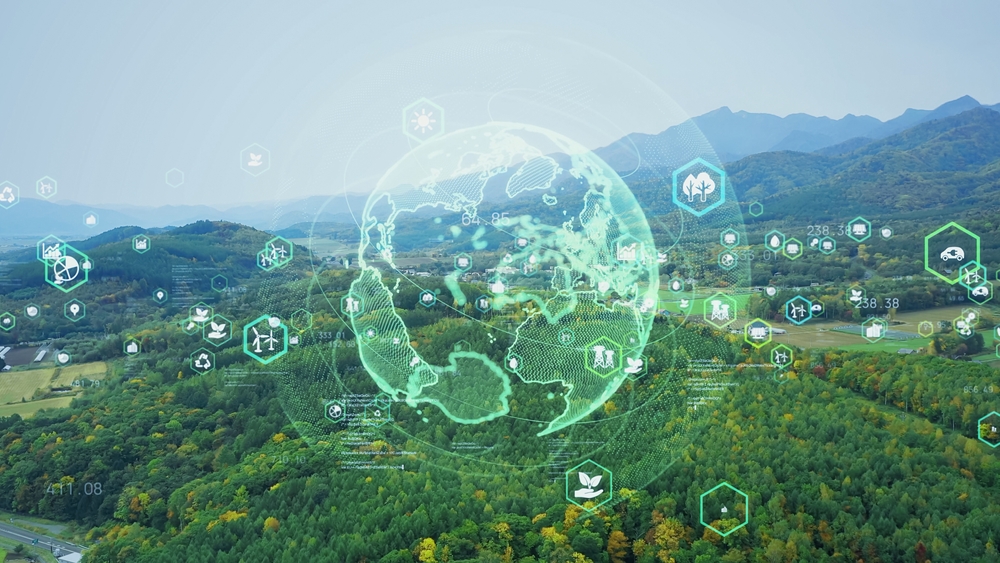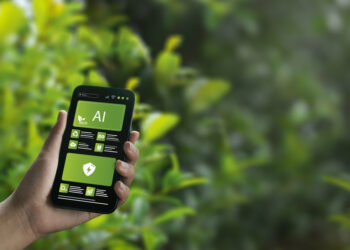In which industries are your software solutions most commonly used?
Regarding the industries most benefiting from our software, transportation, and mobility stand out as significant sectors. Additionally, we have a strong presence in grids, encompassing electric grids, energy production, and even water grids.
We also support cities and campuses – mainly airports and seaports – which often function as micro-cities. While not strictly an industry sector, they form a crucial part of our client base. Furthermore, responsible mining is another essential area we serve.
In addition to these sectors, we work closely with engineering companies. Although they don’t fall into a specific industry sector, they play a vital role in bridging the gap between our software solutions and the end-users within the abovementioned industries.
How does your software contribute to sustainable development and environmental protection in large-scale projects?
Our software contributes to sustainable development and environmental protection in various ways, regardless of the sector we support. There are four core categories of impact. Firstly, we accelerate energy production and facilitate the design and operation of electric infrastructure, including transmission and distribution. Secondly, we address climate action, focusing on resilience, adaptation, and mitigation. We play a significant role in decarbonizing infrastructure, reducing carbon footprints, enhancing design efficiency, and optimizing construction processes.
This saves time, costs, and resources and reduces carbon emissions. In operations, we continue to reduce carbon footprints by increasing efficiencies, extracting insights from data, and identifying areas for improvement, such as reducing energy or water consumption. Our software supports climate resilience and adaptation, offering tools for flood modeling, structural design analysis, and testing materials for resilience to extreme weather events.
We conduct these tests during the design phase, avoiding potential issues during construction. We also provide software for monitoring and inspection, which is particularly valuable as extreme weather events become more frequent, increasing risks to existing infrastructure, especially older structures like dams and bridges.
Our software enables virtual inspections of critical infrastructure, combining IoT and AI for crack detection and issue identification. We apply a data-driven approach to electric and water grids, ensuring system integrity and identifying anomalies for prompt action to reduce water losses.
Lastly, our software aids in land and water resource management. We closely link land and water resources because they are interconnected. We focus on understanding soil and ground conditions efficiently to conserve land resources and prevent water pollution, ultimately contributing to environmental protection and sustainability.
We also have a fourth category, which we refer to as “healthy cities and communities.” This category primarily focuses on large urban areas. Our software is adept at supporting the integration of various systems within such cities. In urban environments, it’s not just about singular focuses like water or transportation; there’s a need for greater connectivity. The transportation sector, which I previously mentioned, plays a vital role in creating healthy and interconnected cities and communities. It’s essential to facilitate sustainable and resilient connections that enhance the quality of life, health, and well-being of residents.
In a smart city, data aggregation and visualization are crucial. It’s essential to collect and present data effectively for decision-makers and stakeholders, including local communities. Therefore, we offer tools for data aggregation and visualization to support informed decision-making and community engagement.
What kind of support and training does Bentley Systems provide to its clients for effective utilization of your software?
We are primarily a software development company, but we also offer what we call “blueprints.” These blueprints serve as guides or templates designed to assist users in addressing specific application challenges. In many instances, these blueprints are structured as workflows that integrate various products to provide solutions tailored to particular industries. For example, let’s consider a scenario where a user wants to build a monitoring solution that involves integrating different products. In such cases, having well-documented workflows becomes essential to navigate through the implementation process effectively.
These blueprints essentially establish the step-by-step processes that connect different products to solve a specific challenge. The choice of blueprint can vary depending on the user’s level of clarity about their objectives. Some users may seek assistance in understanding their precise needs, and in such cases, we guide them through the process. Alternatively, for users with more defined requirements, we offer more prescriptive blueprints outlining exactly what needs to be done.
It’s important to note that while we provide these blueprints and related guidance, our involvement in engineering services is relatively uncommon. When comprehensive engineering services are required, we have a separate, dedicated company within our group. This subsidiary is a digital integrator responsible for implementing services, as this falls outside our core market and business focus.










Discussion about this post